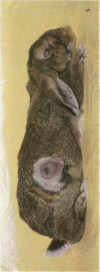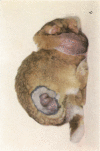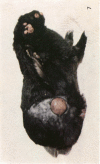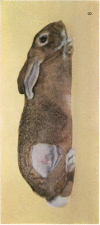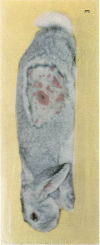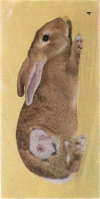Full text
PDF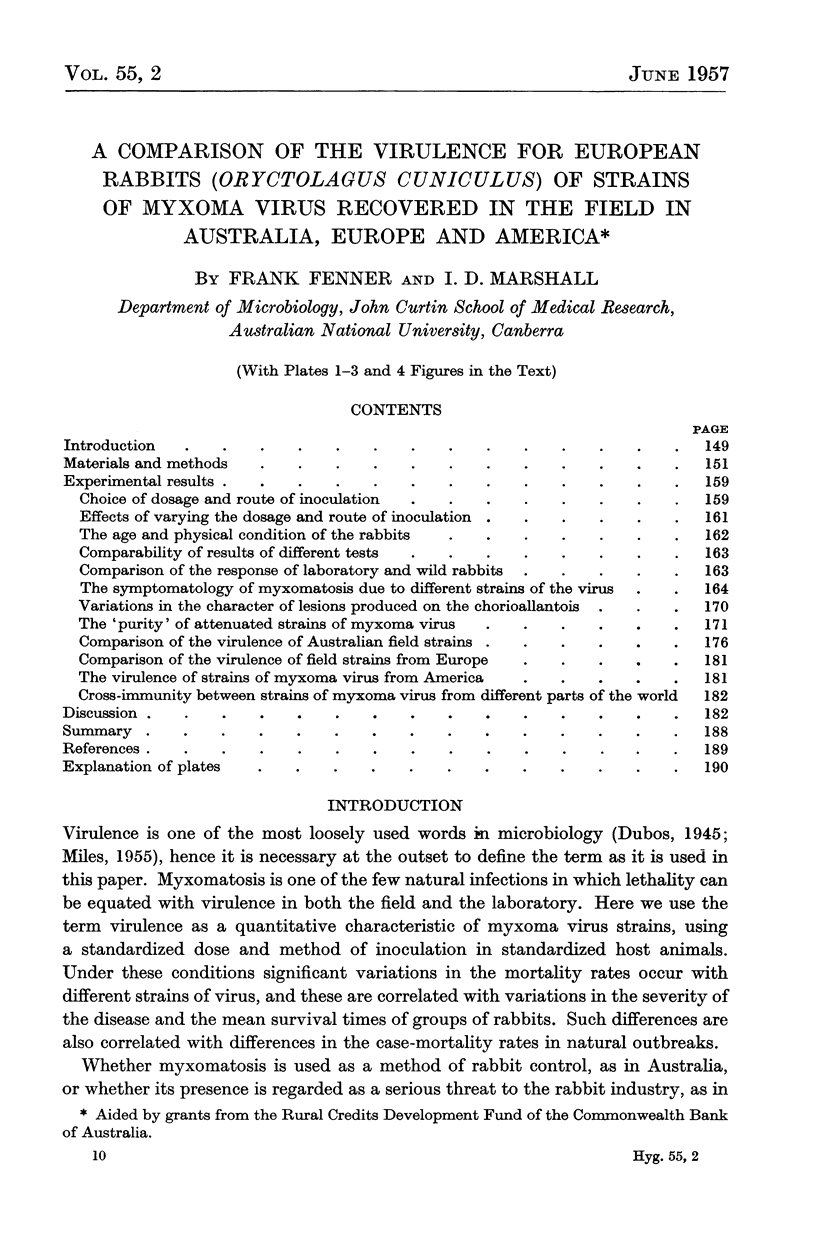
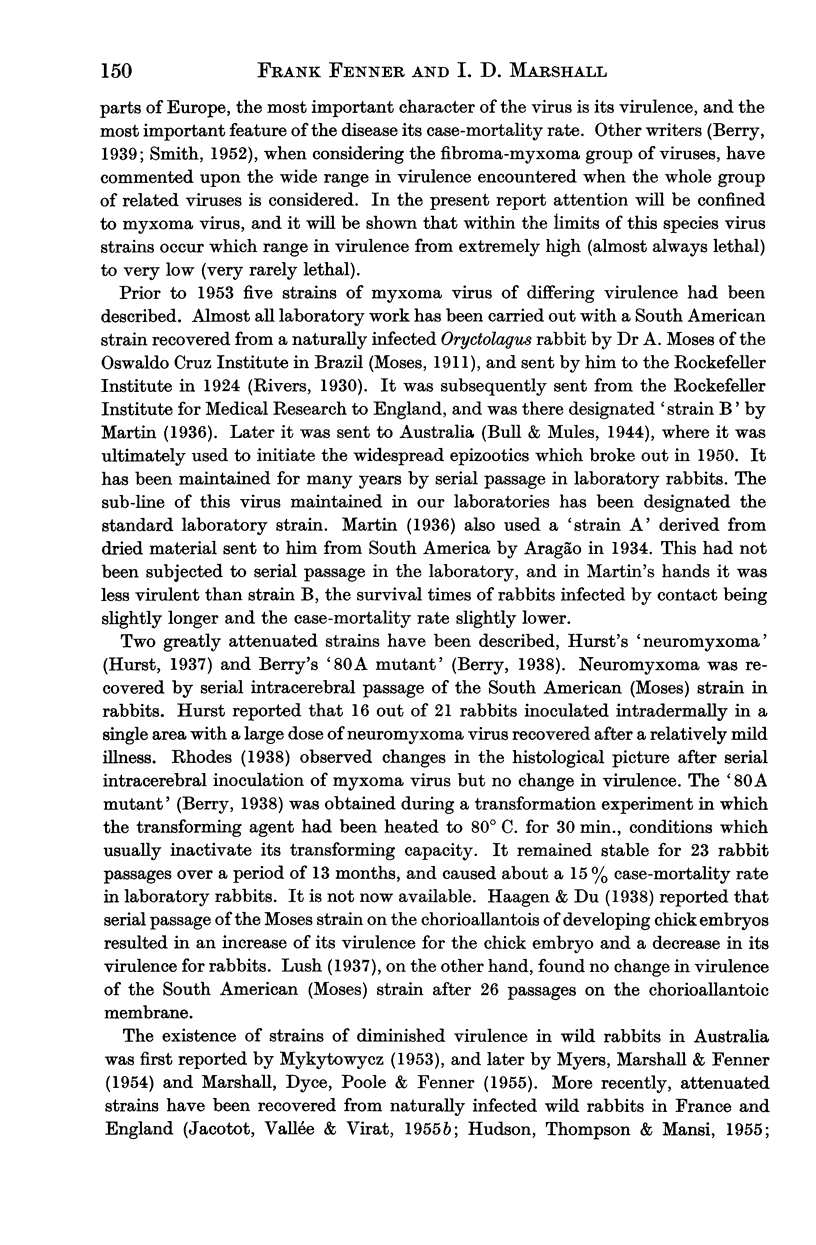

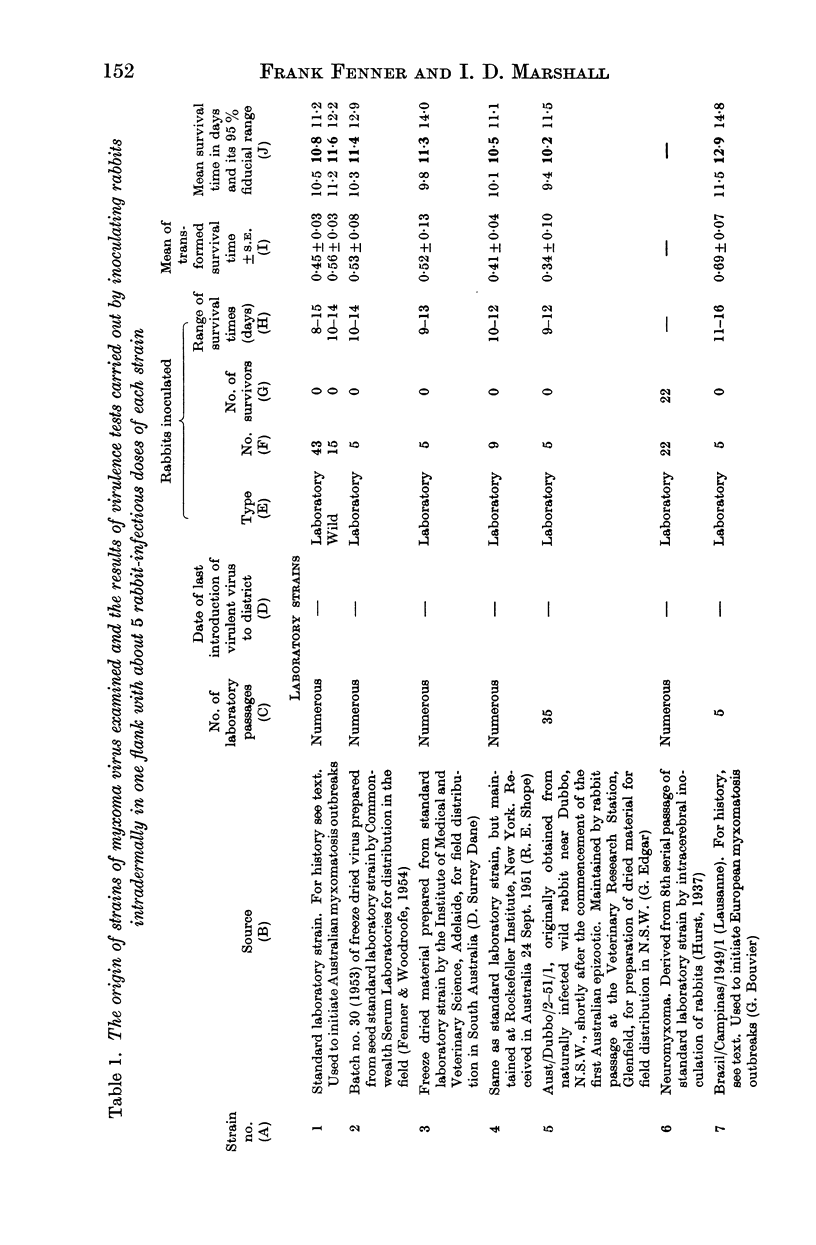
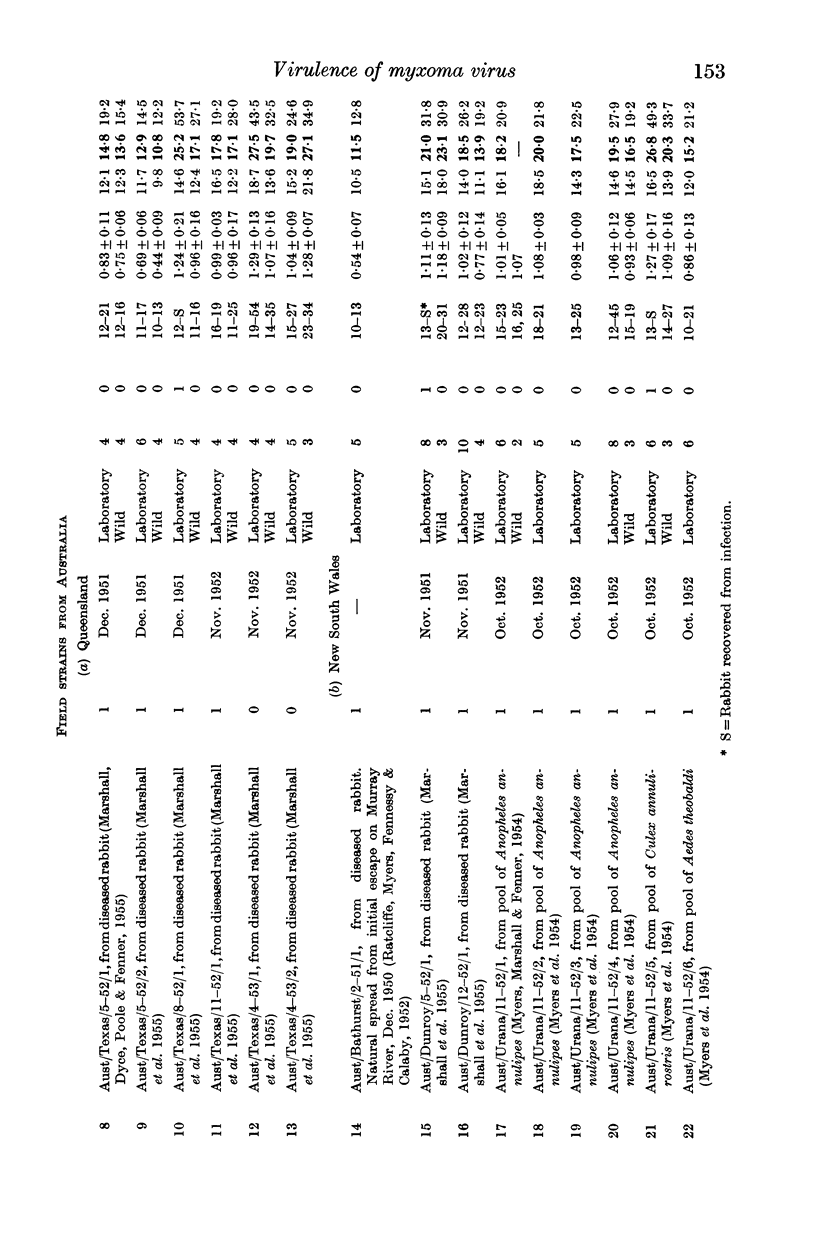




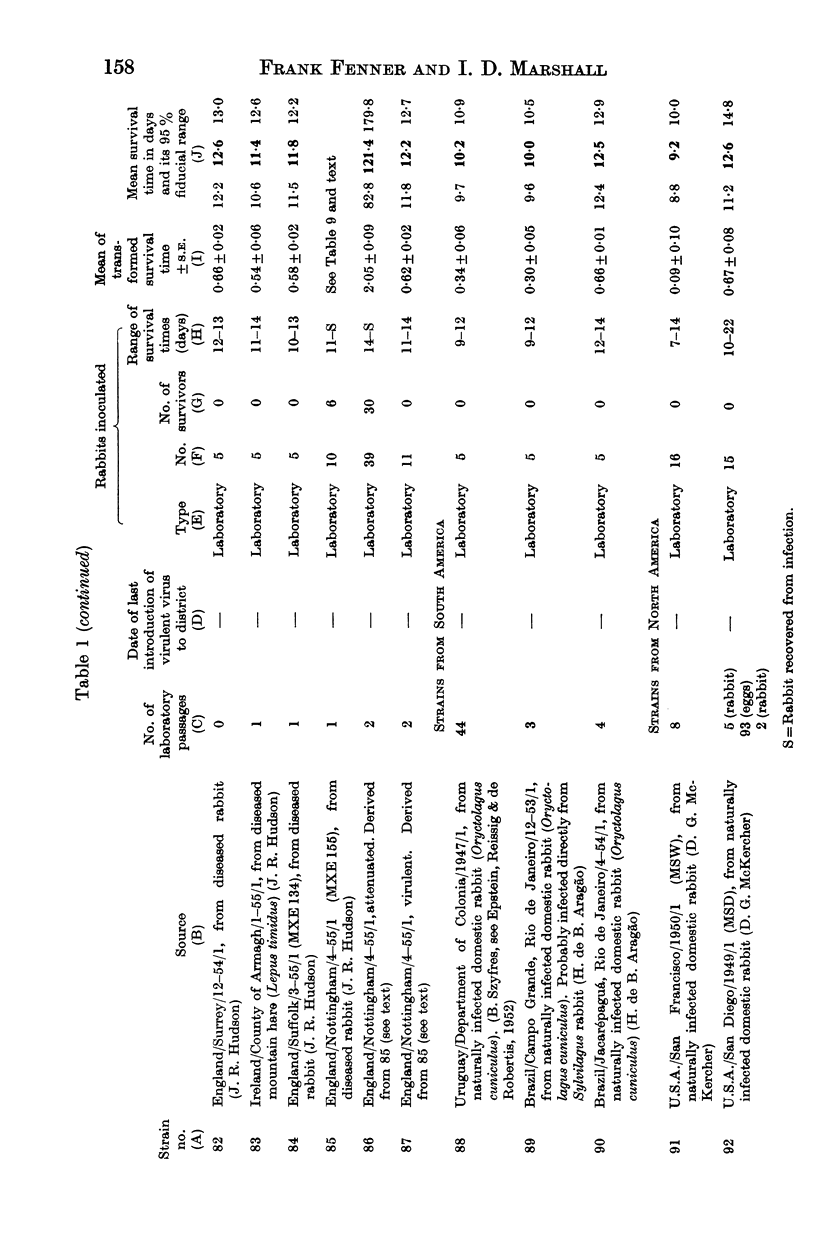

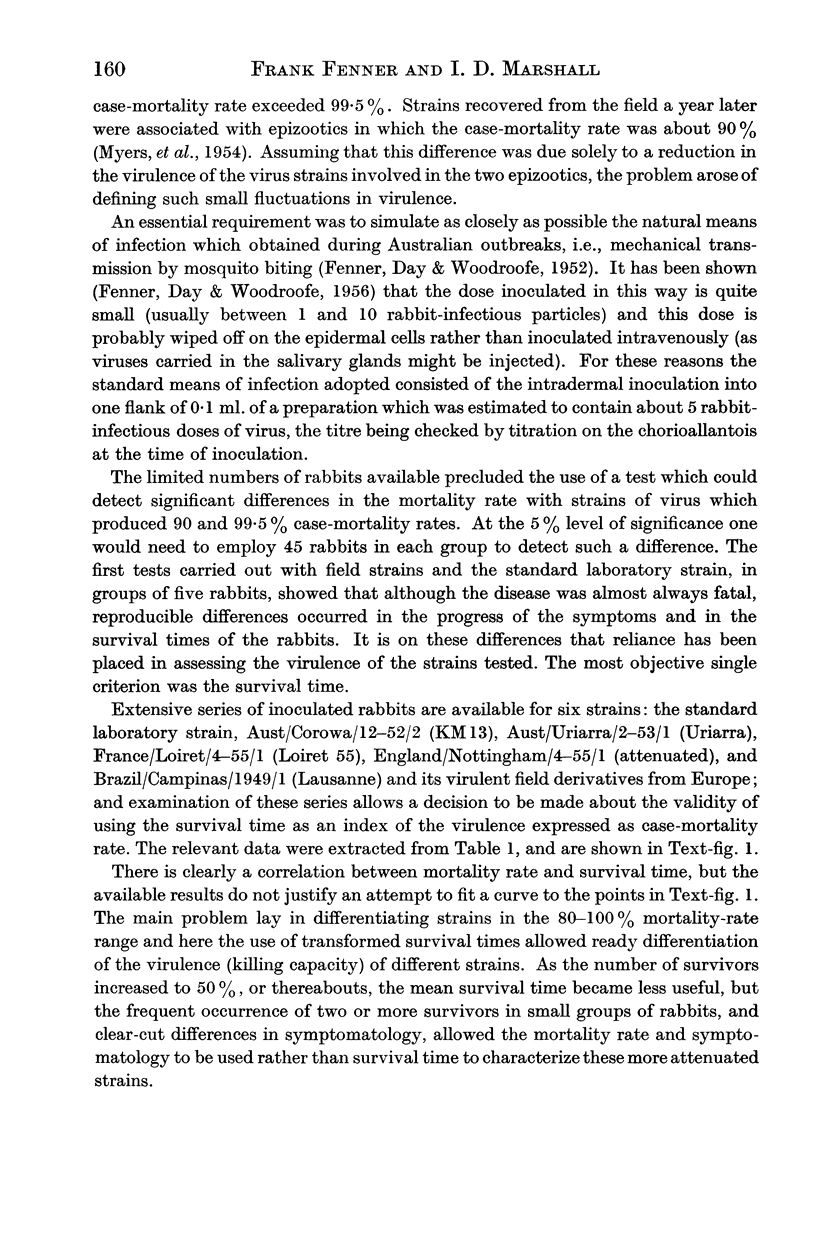
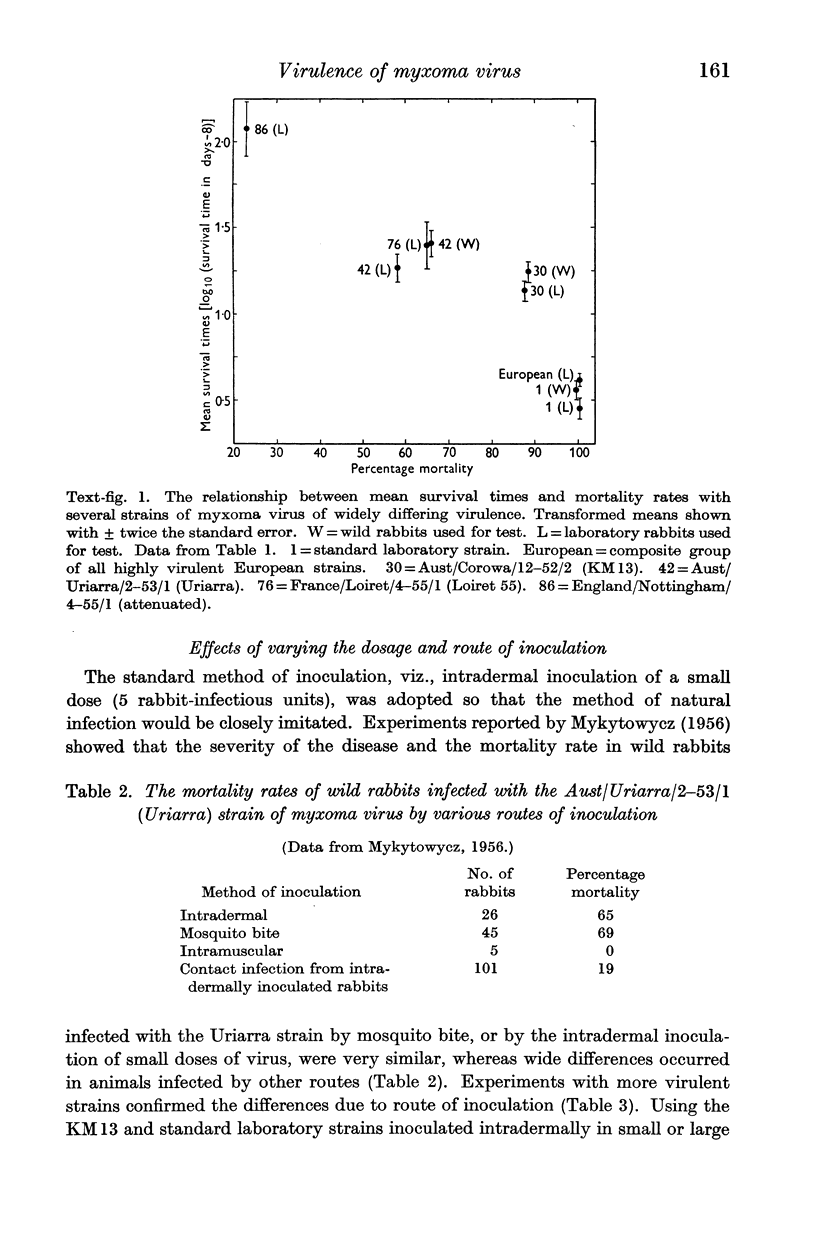


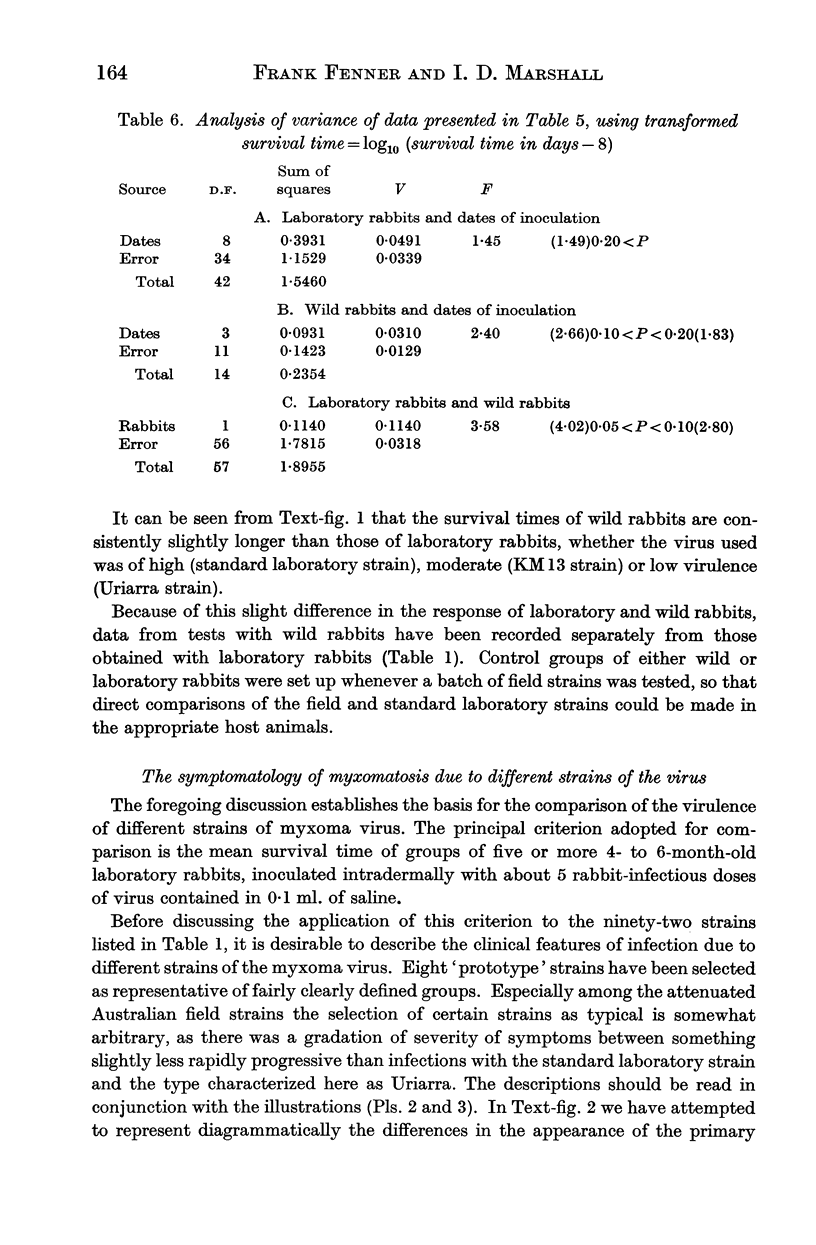
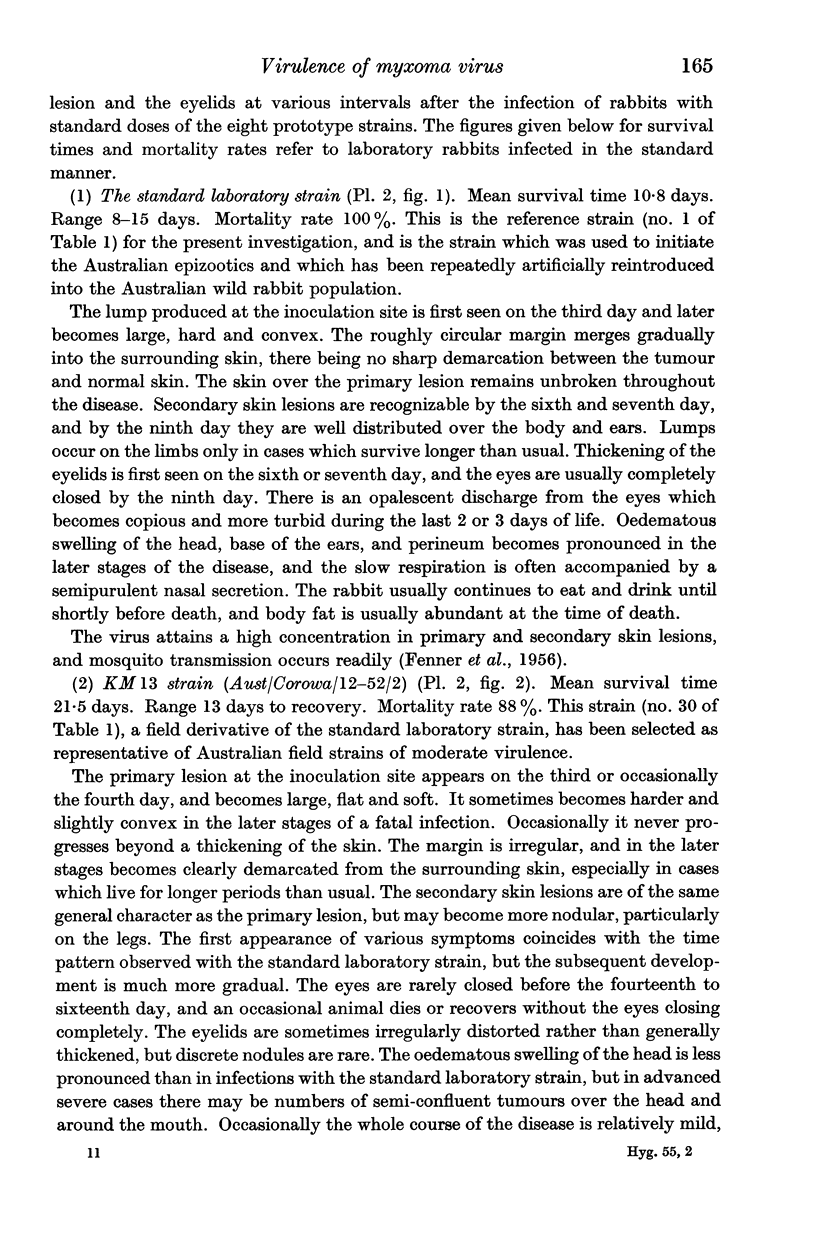


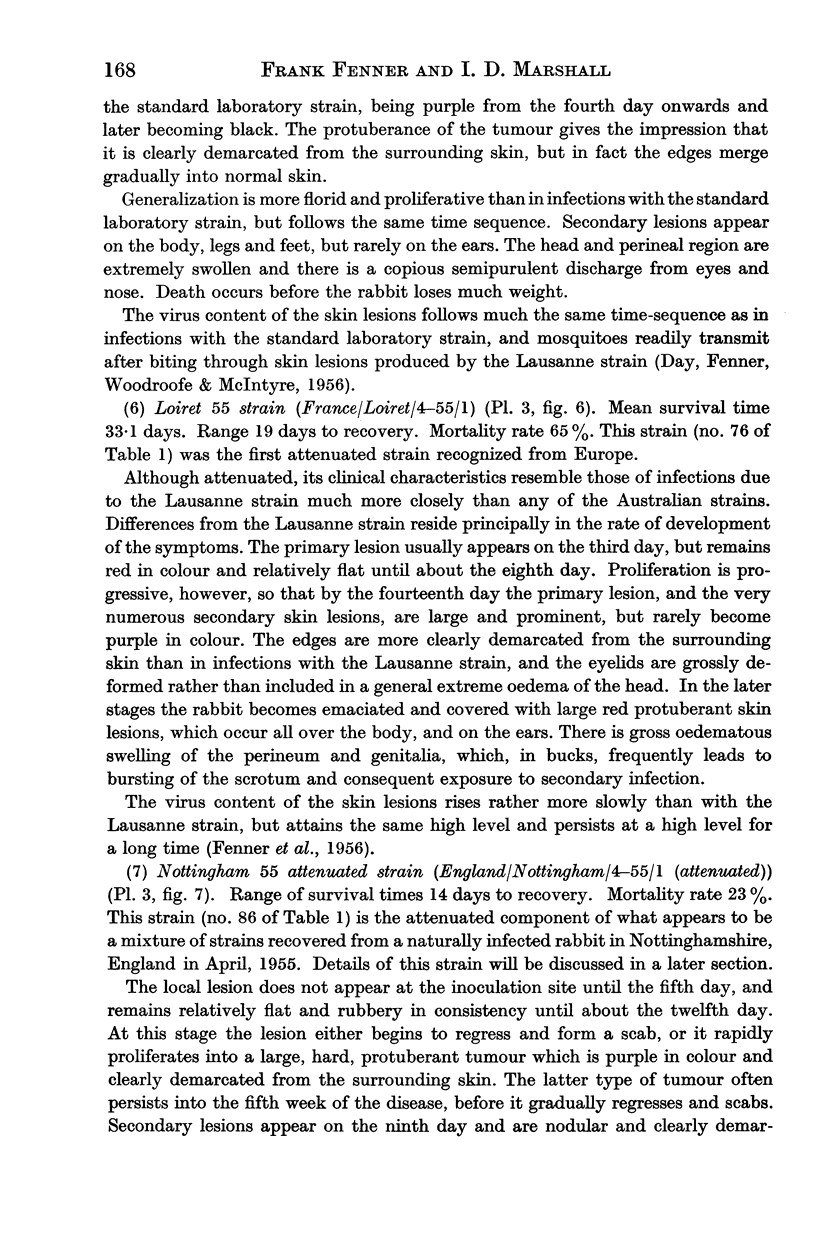

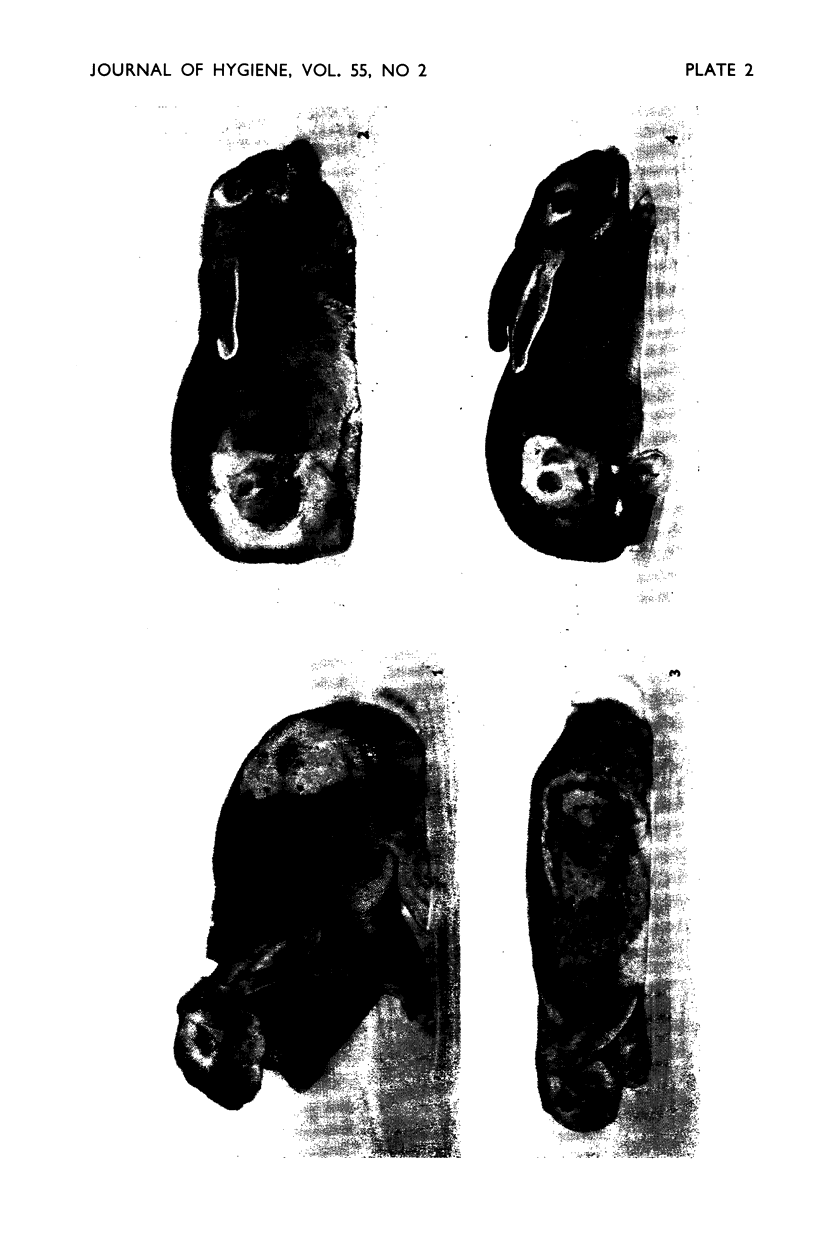
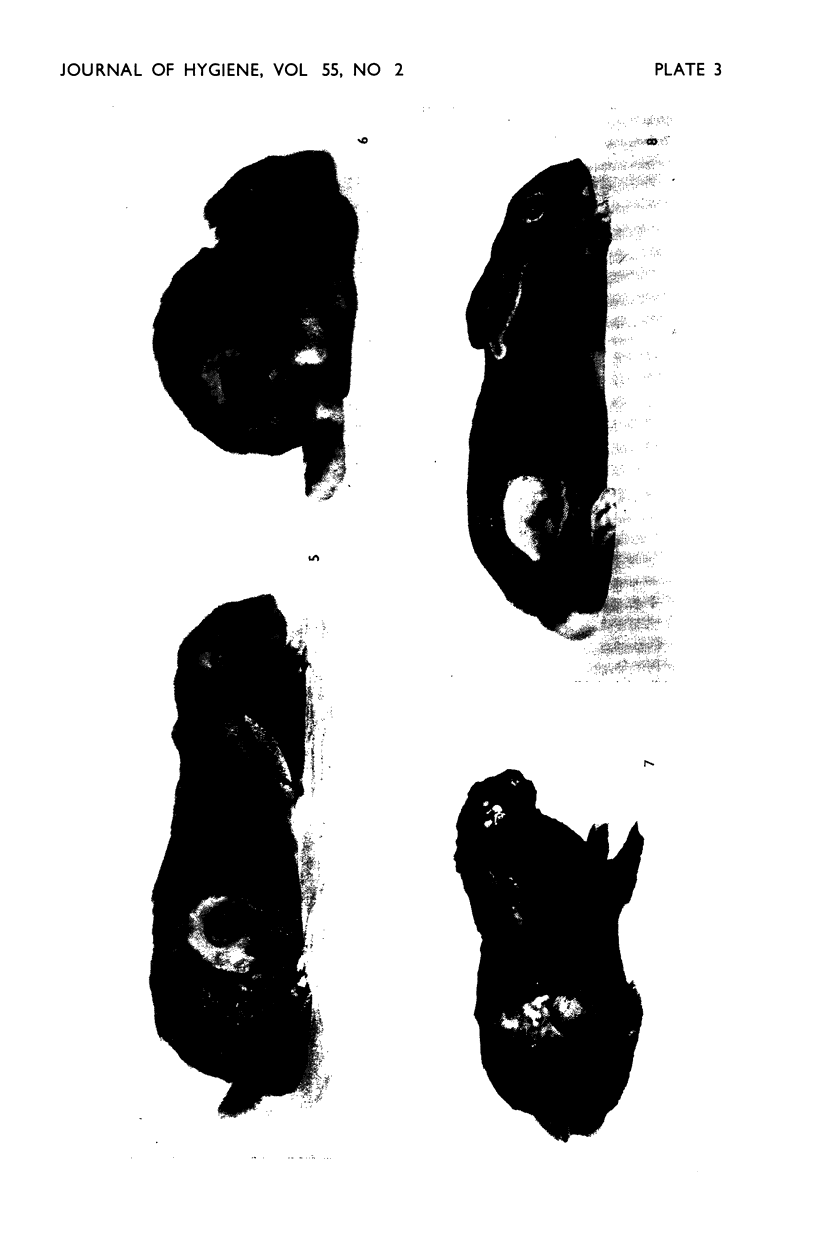
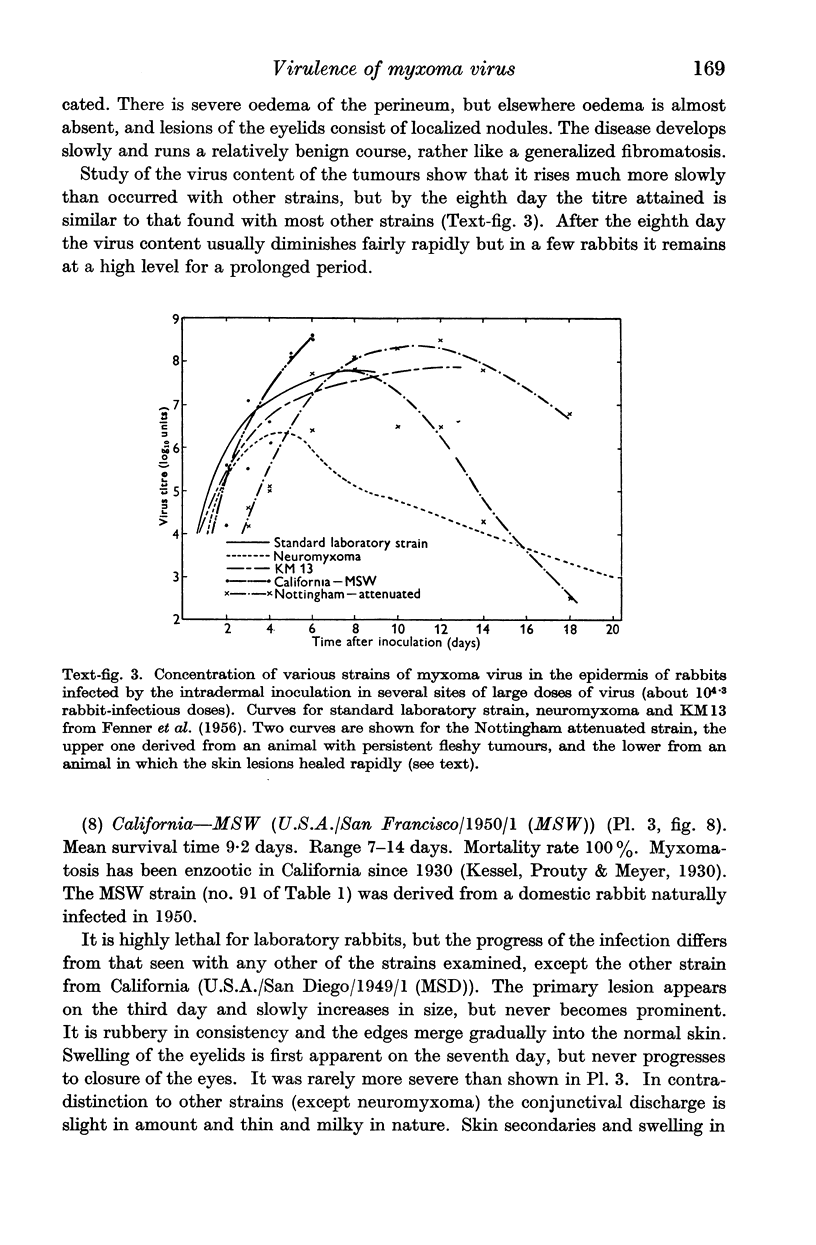
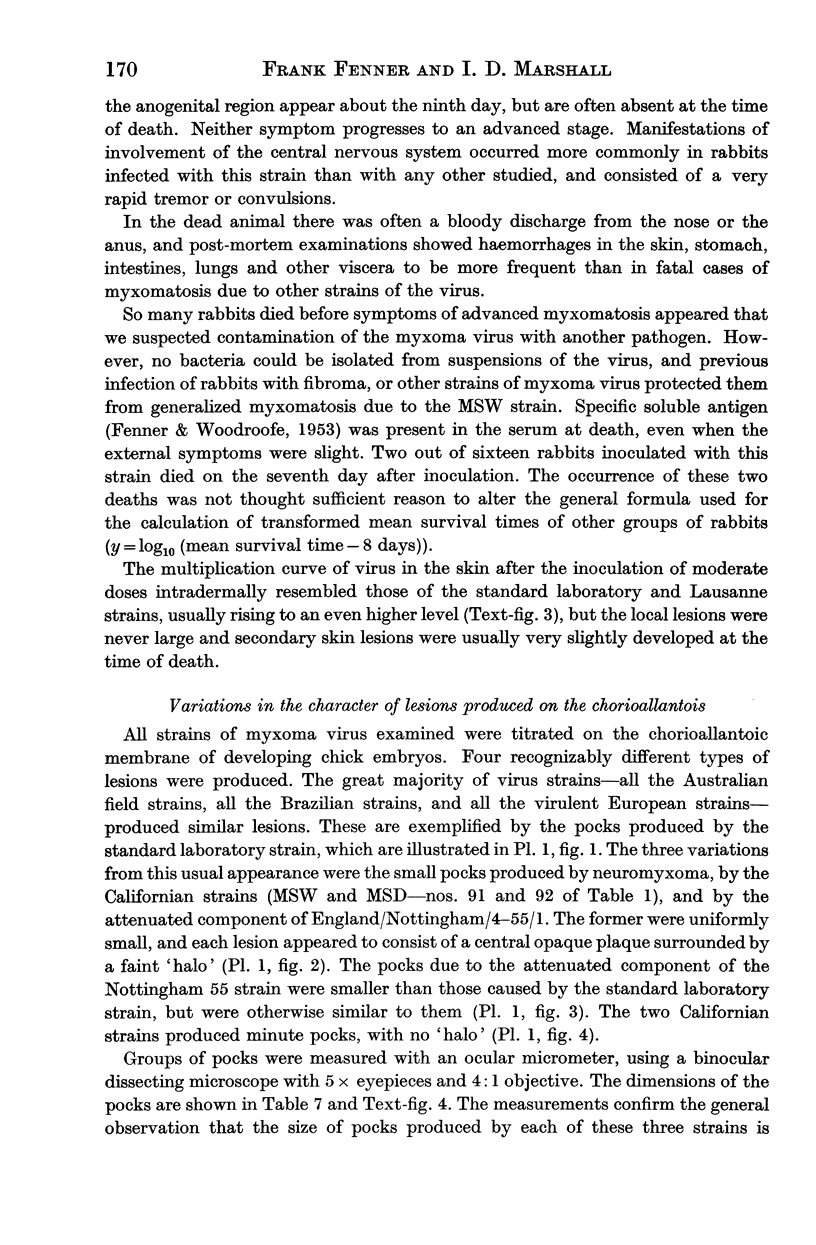

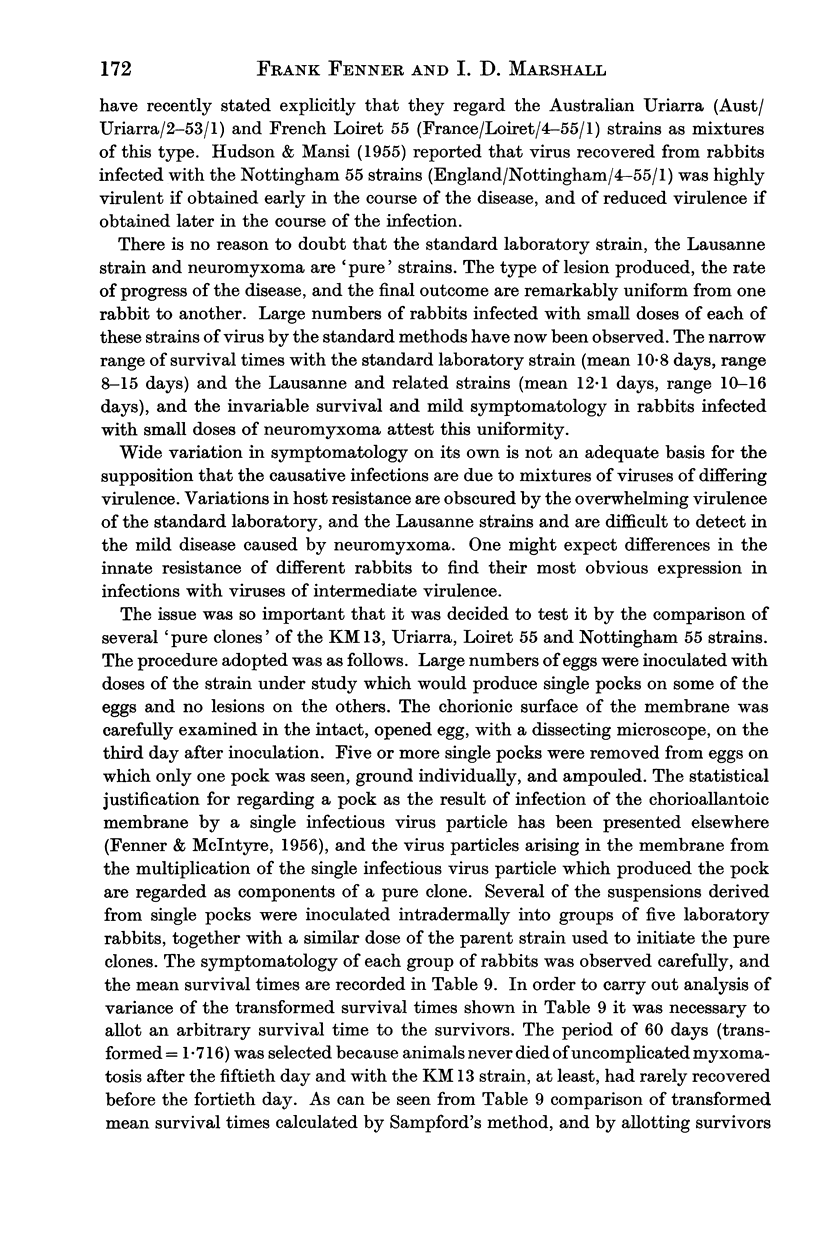
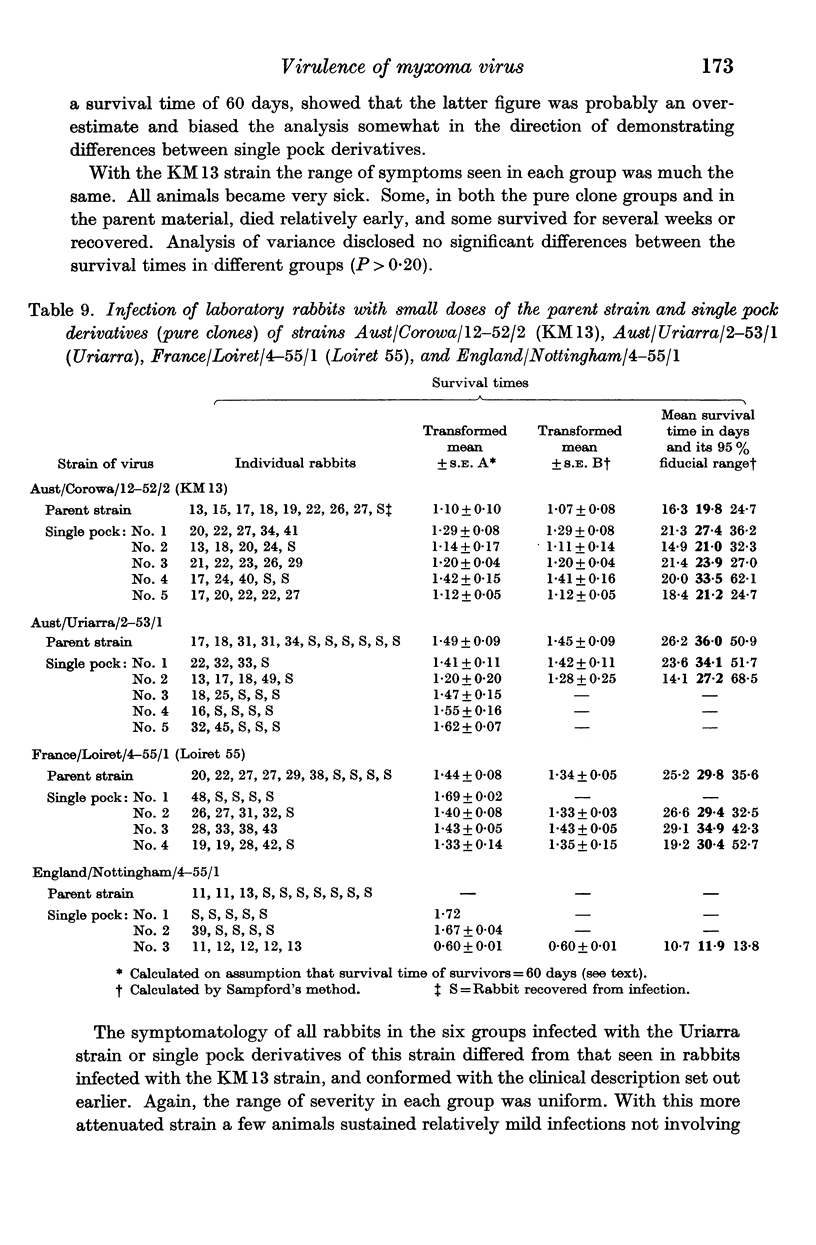
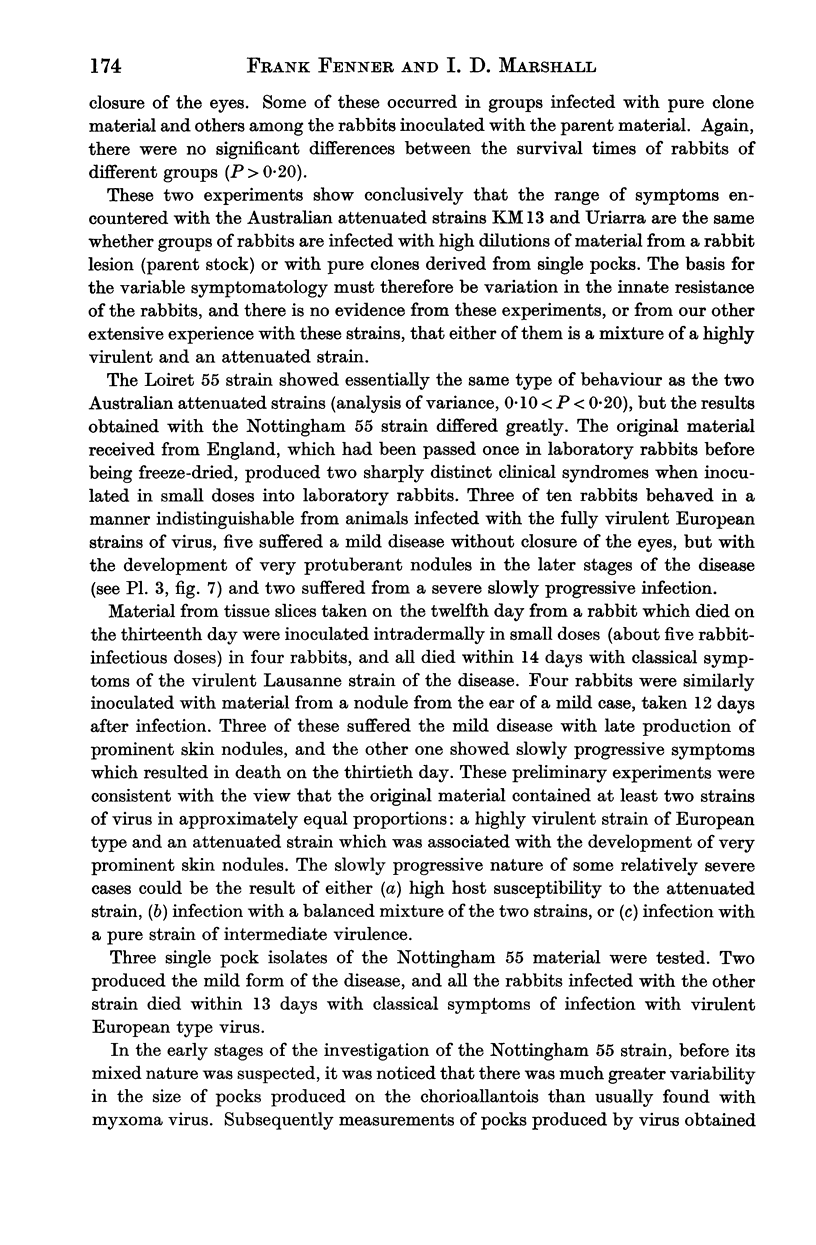
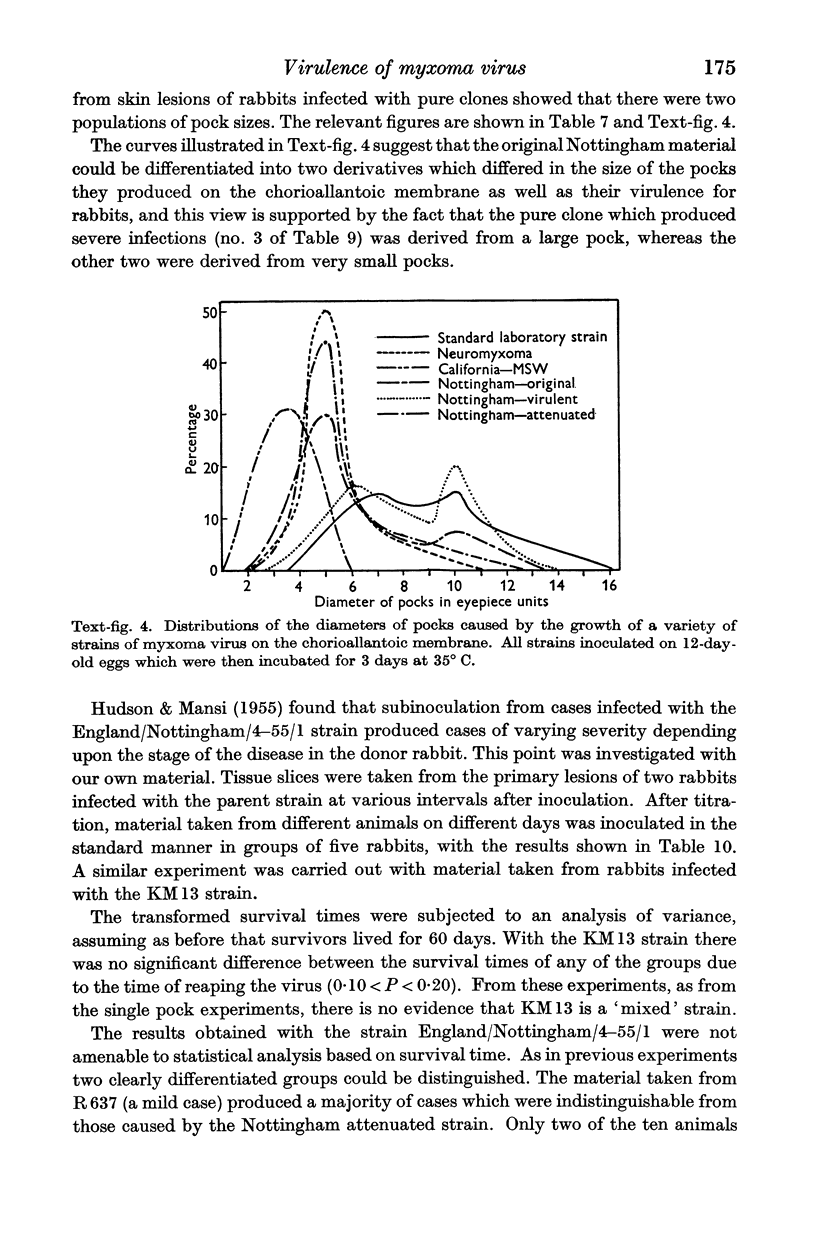
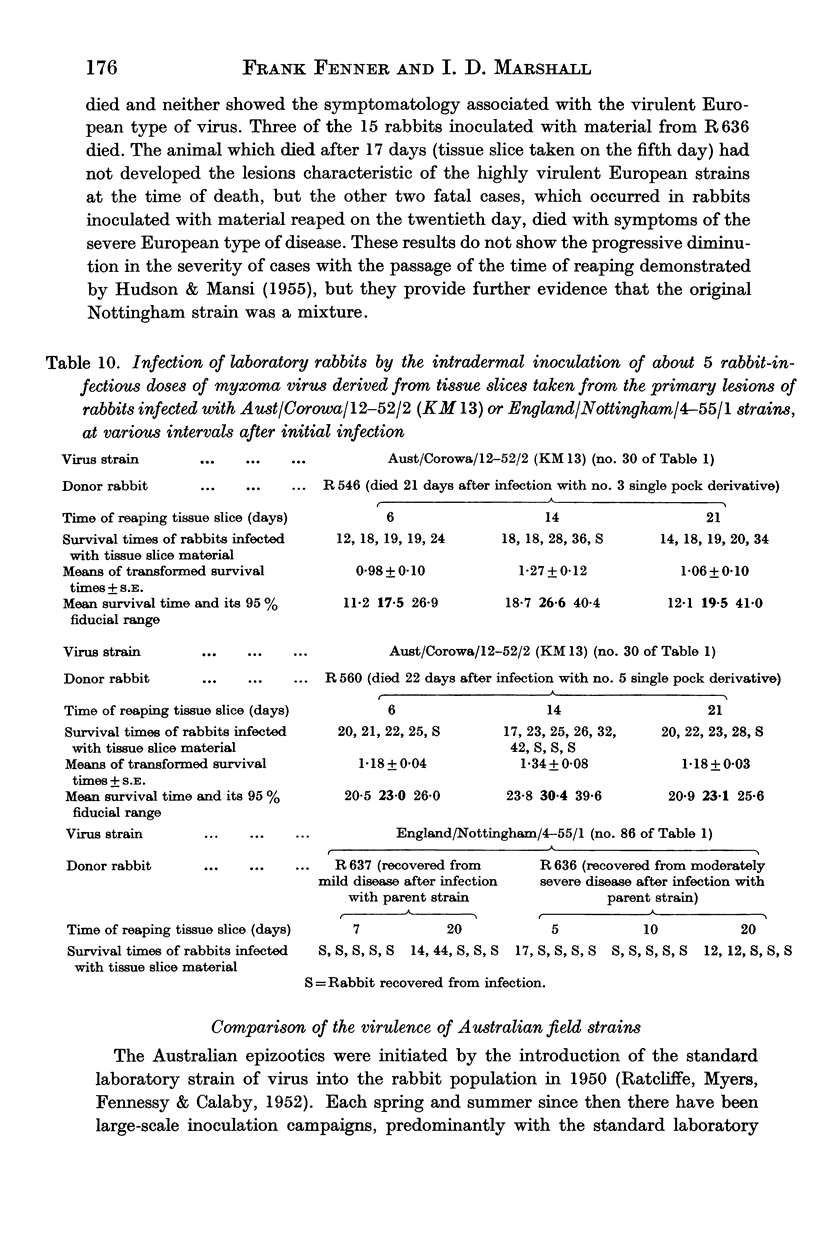
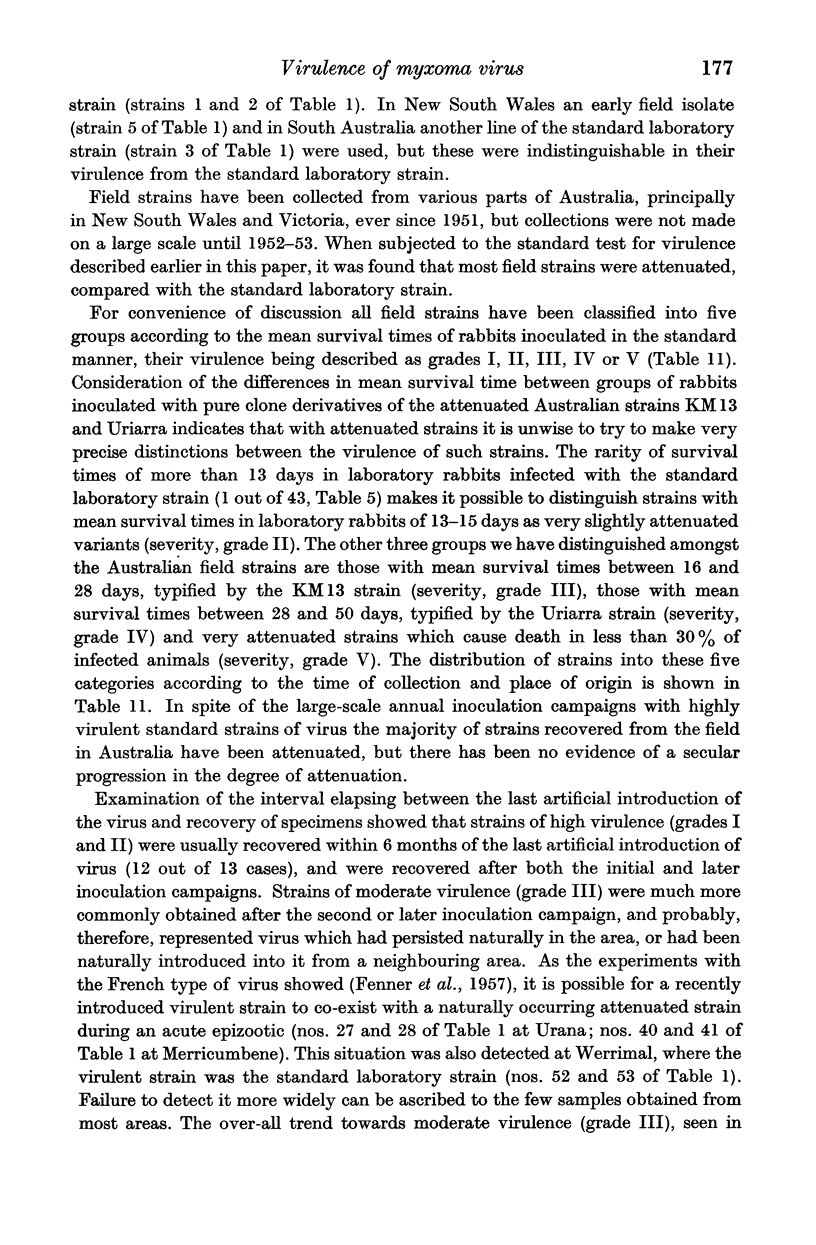
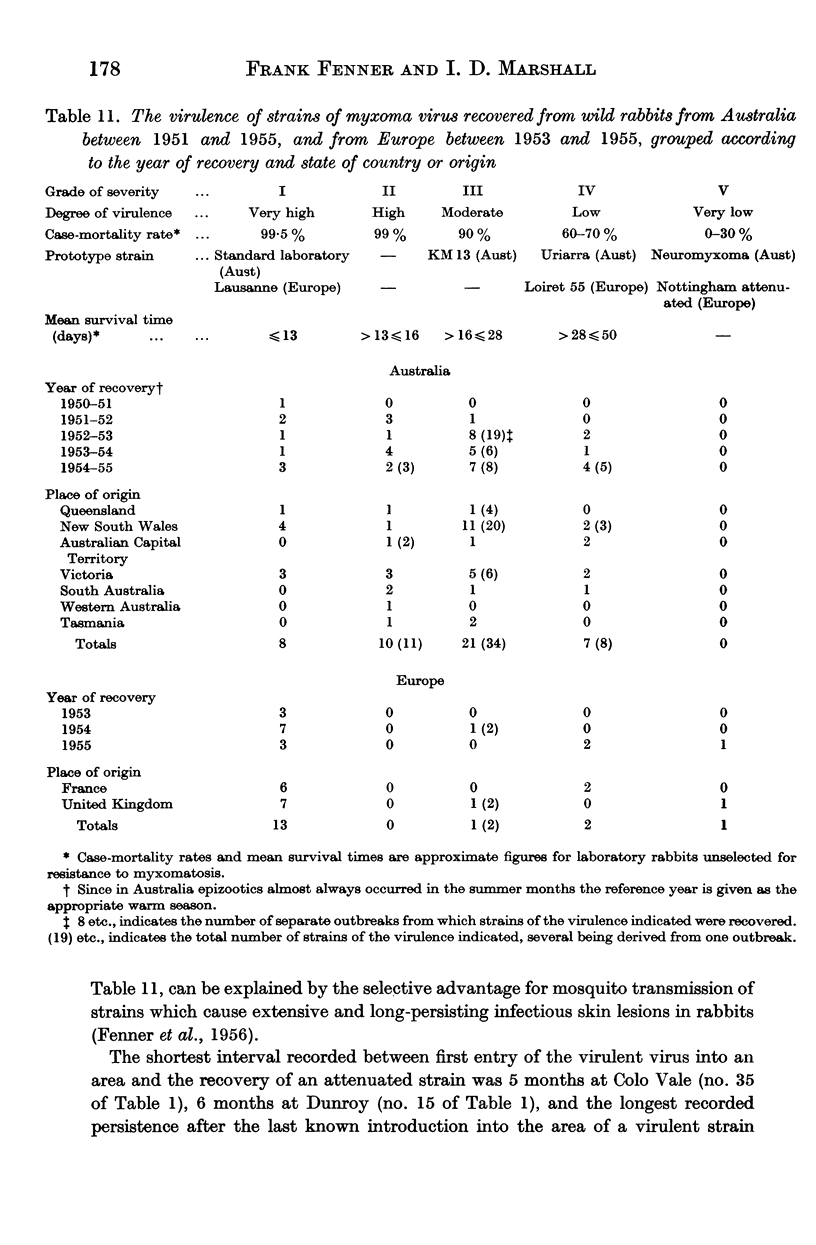


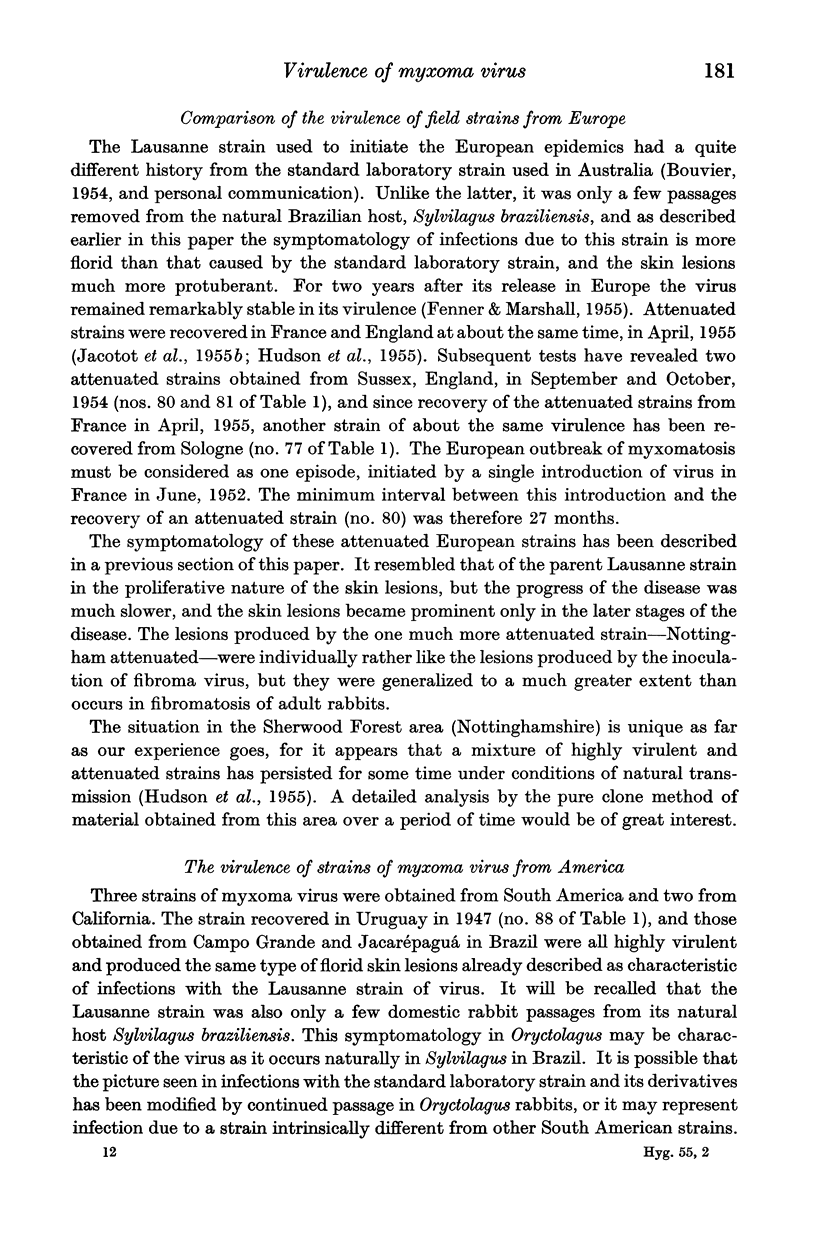


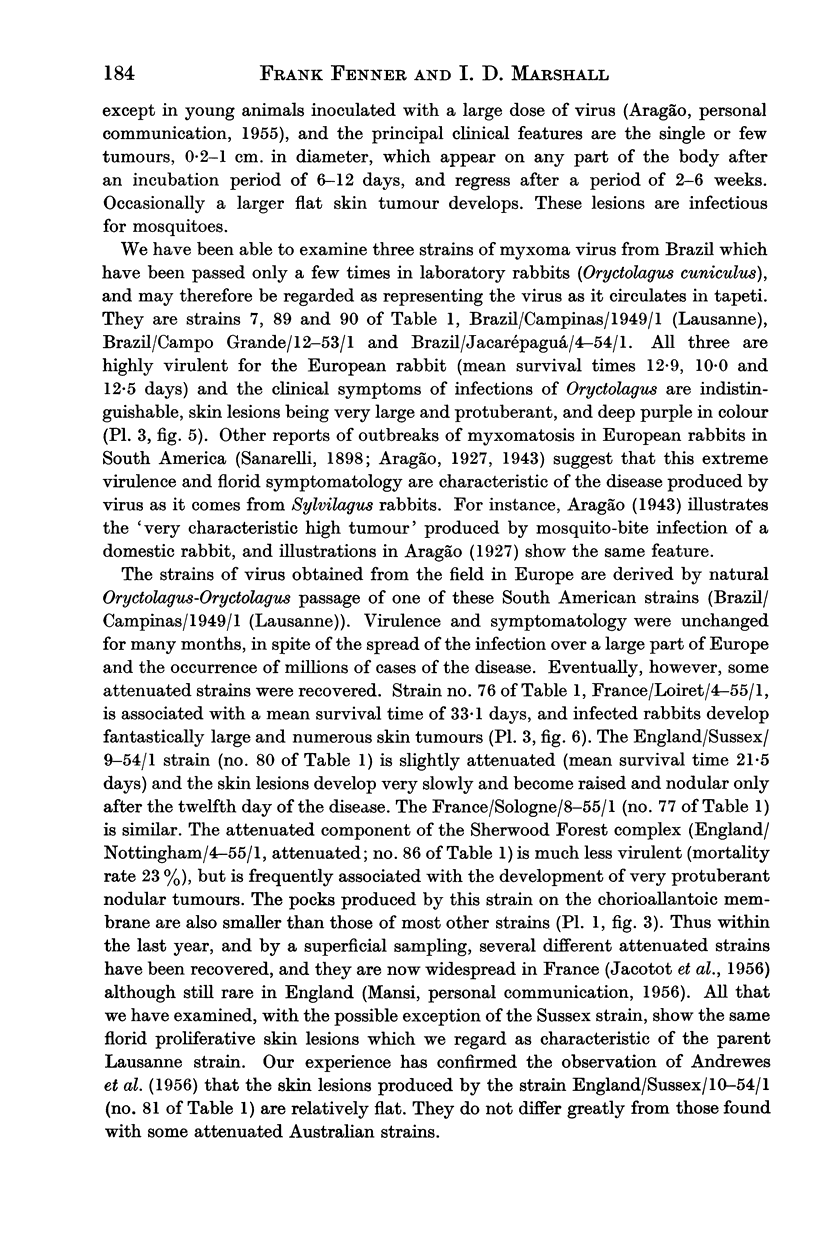
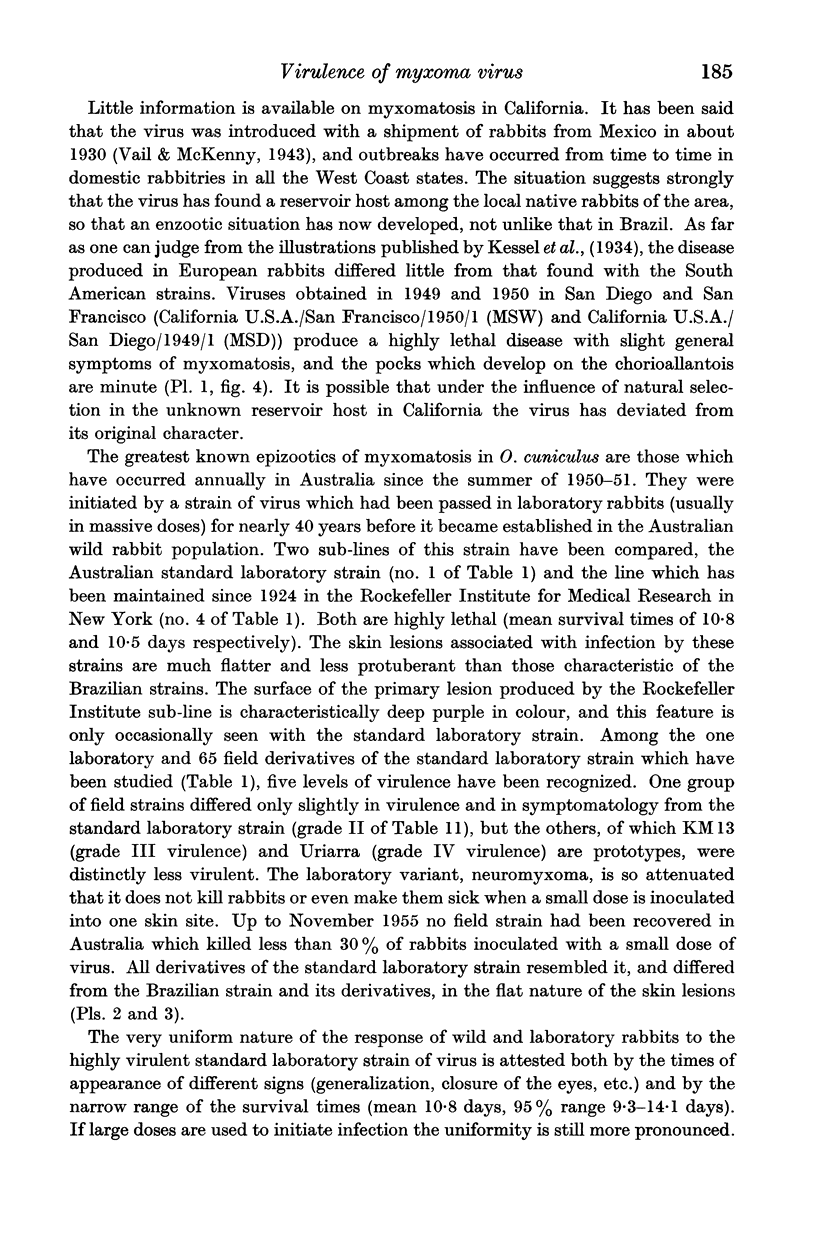
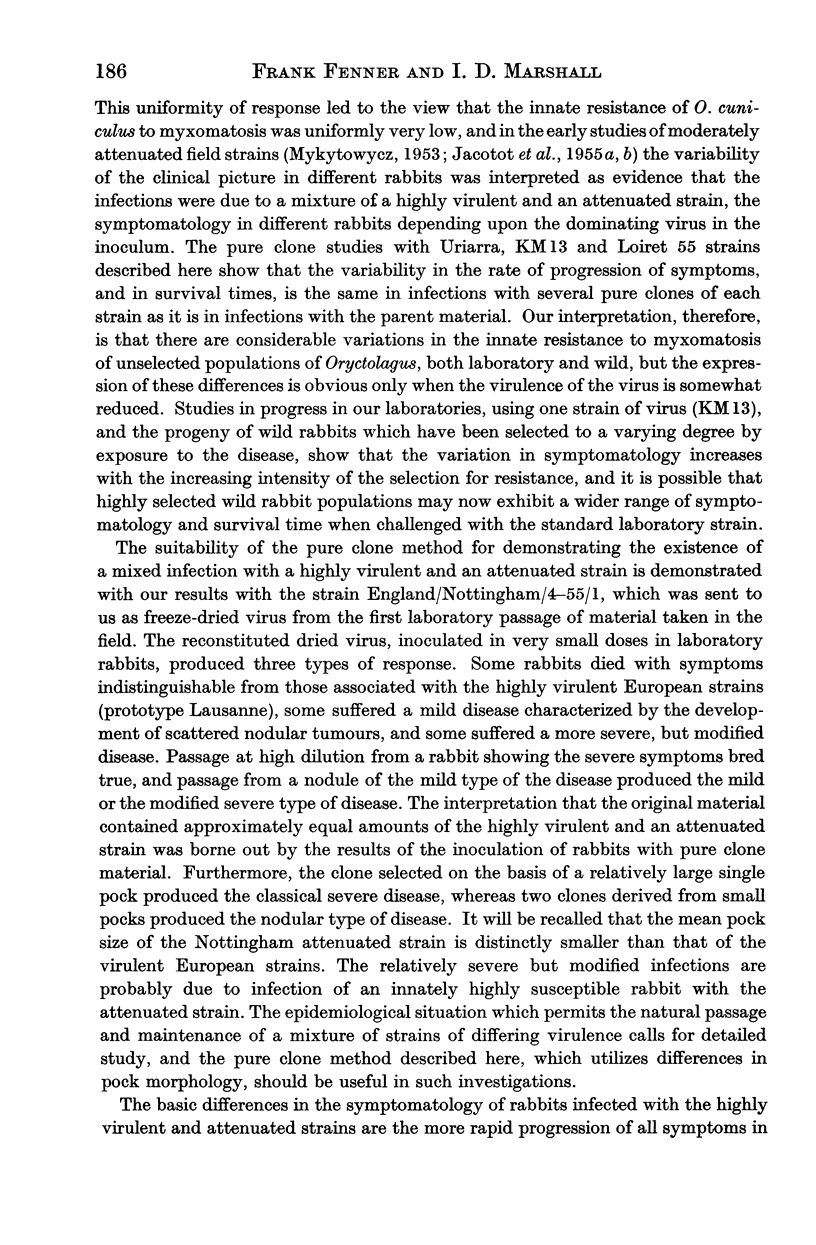

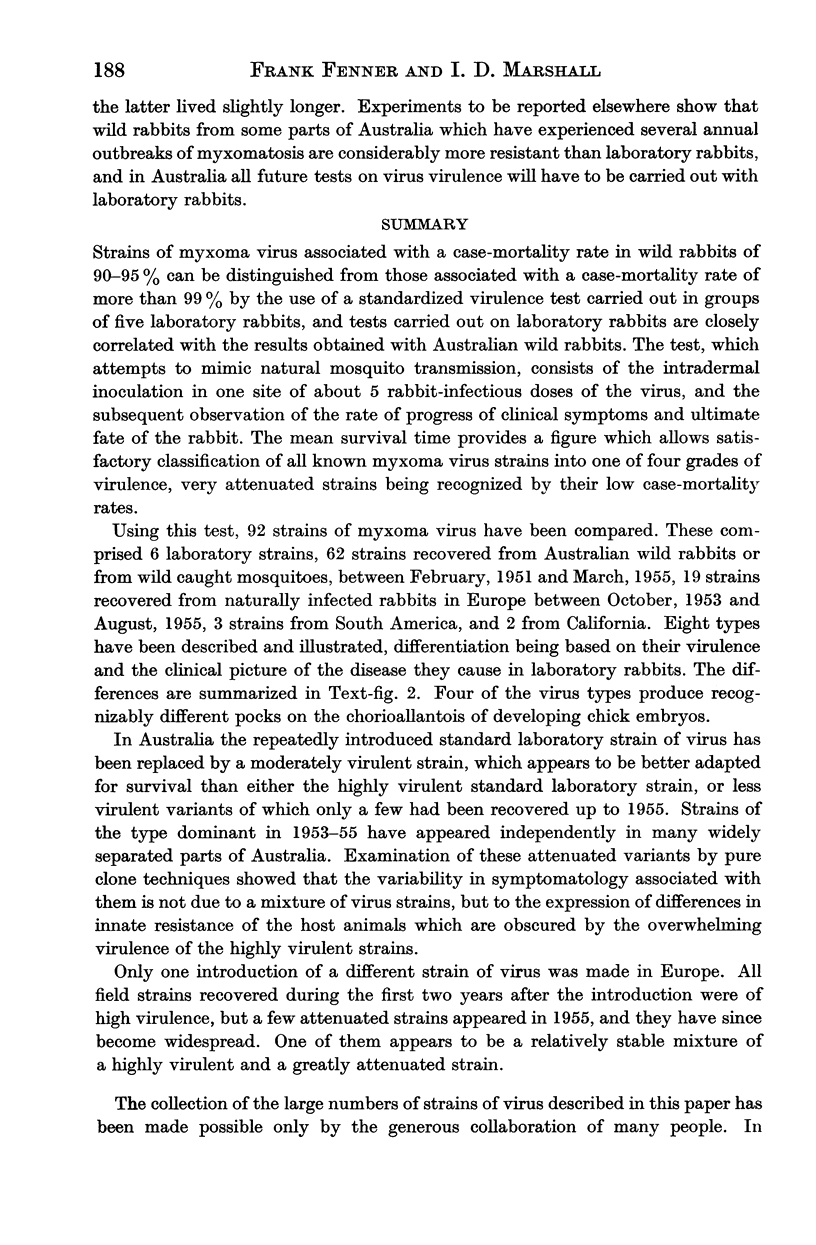

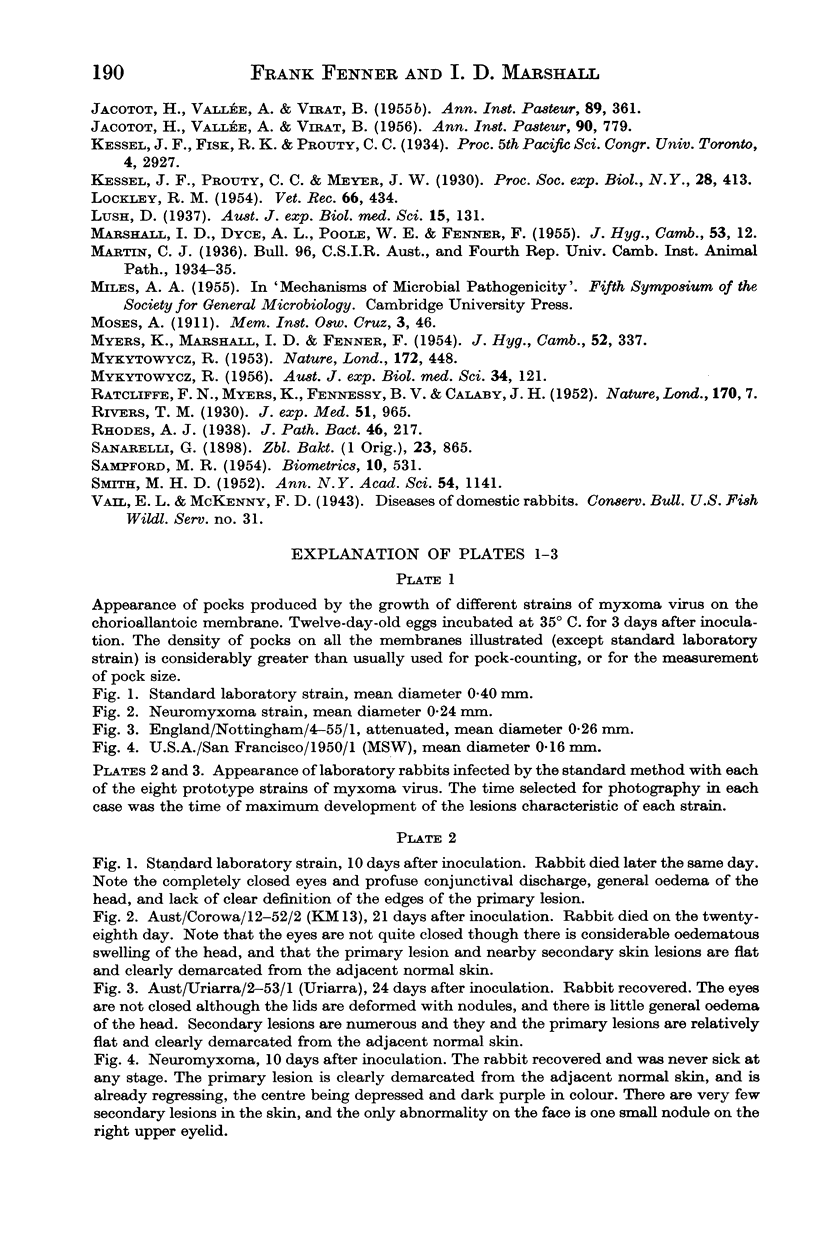
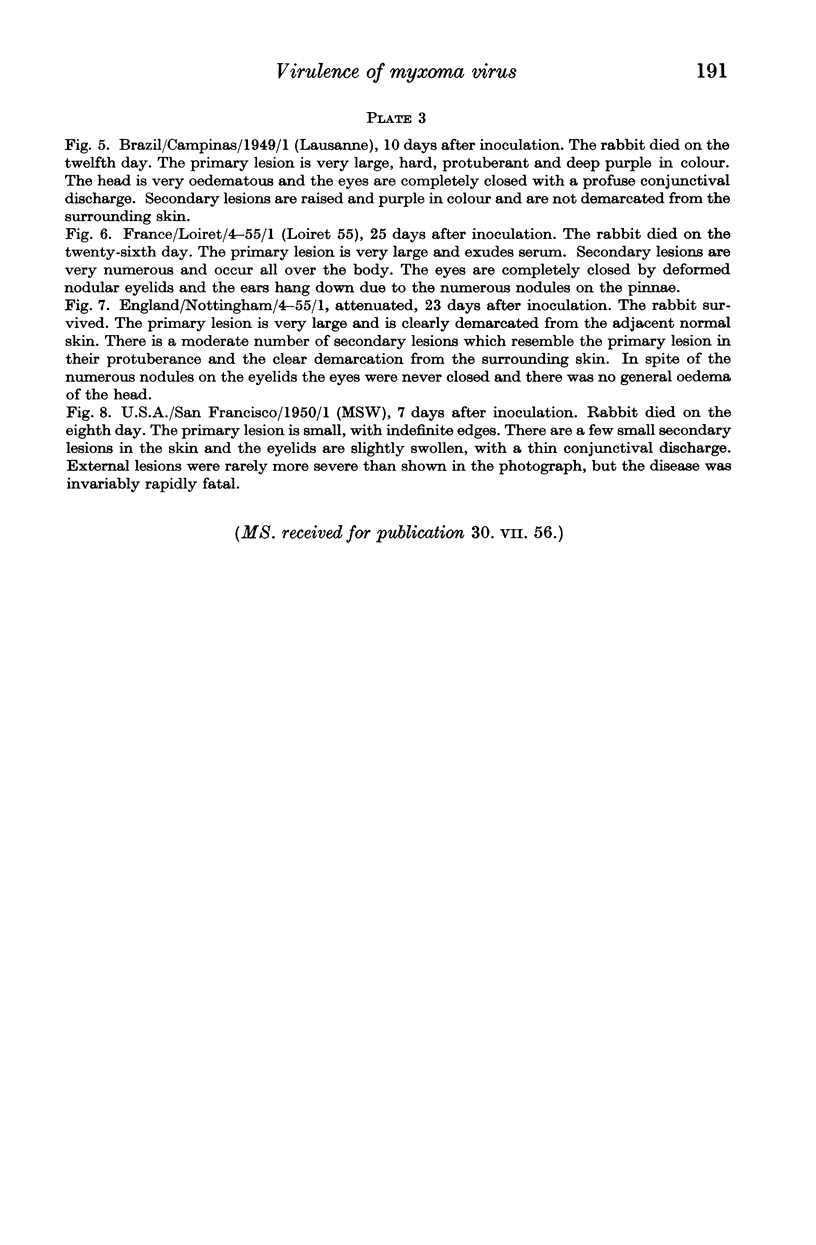
Images in this article
Selected References
These references are in PubMed. This may not be the complete list of references from this article.
- ANDREWES C. H., MUIRHEAD-THOMSON R. C., STEVENSON J. P. Laboratory studies of Anopheles atroparvus in relation to myxomatosis. J Hyg (Lond) 1956 Dec;54(4):478–486. doi: 10.1017/s0022172400044764. [DOI] [PMC free article] [PubMed] [Google Scholar]
- EPSTEIN B., REISSIG M., DE ROBERTIS E. Studies by electron microscopy of thin sections of infectious myxomatosis in rabbits. J Exp Med. 1952 May;95(5):347–354. doi: 10.1084/jem.96.4.347. [DOI] [PMC free article] [PubMed] [Google Scholar]
- FENNER F., DAY M. F., WOODROOFE G. M. Epidemiological consequences of the mechanical transmission of myxomatosis by mosquitoes. J Hyg (Lond) 1956 Jun;54(2):284–303. doi: 10.1017/s0022172400044521. [DOI] [PMC free article] [PubMed] [Google Scholar]
- FENNER F., DAY M. F., WOODROOFE G. M. The mechanism of the transmission of myxomatosis in the European rabbit (Oryctolagus cuniculus) by the mosquito Aedes aegypti. Aust J Exp Biol Med Sci. 1952 Apr;30(2):139–152. doi: 10.1038/icb.1952.13. [DOI] [PubMed] [Google Scholar]
- FENNER F., MARSHALL I. D. Occurrence of attenuated strains of myxoma virus in Europe. Nature. 1955 Oct 22;176(4486):782–783. doi: 10.1038/176782a0. [DOI] [PubMed] [Google Scholar]
- FENNER F., MARSHALL I. D. Passive immunity in myxomatosis of the European rabbit (Oryctolagus cuniculus): the protection conferred on kittens born by immune does. J Hyg (Lond) 1954 Sep;52(3):321–336. doi: 10.1017/s0022172400027534. [DOI] [PMC free article] [PubMed] [Google Scholar]
- FENNER F., MARSHALL I. D., WOODROOFE G. M. Studies in the epidemiology of infectious myxomatosis of rabbits. I. Recovery of Australian wild rabbits (Oryctolagus cuniculus) from myxomatosis under field conditions. J Hyg (Lond) 1953 Jun;51(2):225–244. doi: 10.1017/s0022172400015655. [DOI] [PMC free article] [PubMed] [Google Scholar]
- FENNER F., MCINTYRE G. A. Infectivity titrations of myxoma virus in the rabbit and the developing chick embryo. J Hyg (Lond) 1956 Jun;54(2):246–257. doi: 10.1017/s0022172400044508. [DOI] [PMC free article] [PubMed] [Google Scholar]
- FENNER F., POOLE W. E., MARSHALL I. D., DYCE A. L. Studies in the epidemiology of infectious myxomatosis of rabbits. VI. The experimental introduction of the European strain of myxoma virus into Australian wild rabbit populations. J Hyg (Lond) 1957 Jun;55(2):192–206. doi: 10.1017/s0022172400037104. [DOI] [PMC free article] [PubMed] [Google Scholar]
- FENNER F., WOODROOFE G. M. Protection of laboratory rabbits against myxomatosis by vaccination with fibroma virus. Aust J Exp Biol Med Sci. 1954 Oct;32(5):653–668. doi: 10.1038/icb.1954.68. [DOI] [PubMed] [Google Scholar]
- FENNER F., WOODROOFE G. M. The pathogenesis of infectious myxomatosis; the mechanism of infection and the immunological response in the European rabbit (Oryctolagus cuniculus). Br J Exp Pathol. 1953 Aug;34(4):400–411. [PMC free article] [PubMed] [Google Scholar]
- HUDSON J. R., THOMPSON H. V., MANSI W. Myxoma virus in Britain. Nature. 1955 Oct 22;176(4486):783–783. doi: 10.1038/176783a0. [DOI] [PubMed] [Google Scholar]
- Houlihan R. B., Derrick W. A. INFECTIOUS MYXOMATOSIS IN MALNOURISHED RABBITS. Science. 1945 Apr 6;101(2623):364–364. doi: 10.1126/science.101.2623.364. [DOI] [PubMed] [Google Scholar]
- JACOTOT H., VALLEE A., VIRAT B. Apparition en France d'un mutant naturellement atténué du virus de Sanarelli. Ann Inst Pasteur (Paris) 1955 Sep;89(3):361–364. [PubMed] [Google Scholar]
- JACOTOT H., VALLEE A., VIRAT B. Etude d'une souche atténuée de virus du myxome, Uriarra III d'Australie. Ann Inst Pasteur (Paris) 1955 Jul;89(1):8–15. [PubMed] [Google Scholar]
- JACOTOT H., VALLEE A., VIRAT B. Etude de quelques souches françaises de virus attenué du myxome infectieux. Ann Inst Pasteur (Paris) 1956 Jun;90(6):779–783. [PubMed] [Google Scholar]
- MYERS K., MARSHALL I. D., FENNER F. Studies in the epidemiology of infectious myxomatosis in rabbits. III. Observations on two succeeding epizootics in Australian wild rabbits on the Riverine Plain of South-Eastern Australia 1951-1953. J Hyg (Lond) 1954 Sep;52(3):337–360. doi: 10.1017/s0022172400027546. [DOI] [PMC free article] [PubMed] [Google Scholar]
- MYKYTOWYCZ R. An attenuated strain of the myxomatosis virus recovered from the field. Nature. 1953 Sep 5;172(4375):448–449. doi: 10.1038/172448a0. [DOI] [PubMed] [Google Scholar]
- RATCLIFFE F. N., MYERS K., FENNESSY B. V., CALABY J. H. Myxomatosis in Australia; a step towards the biological control of the rabbit. Nature. 1952 Jul 5;170(4314):7–11. doi: 10.1038/170007a0. [DOI] [PubMed] [Google Scholar]
- SMITH M. H. D. The Berry-Dedrick transformation of fibroma into myxoma in the rabbit. Ann N Y Acad Sci. 1952 Jul 10;54(6):1141–1152. doi: 10.1111/j.1749-6632.1952.tb39984.x. [DOI] [PubMed] [Google Scholar]




